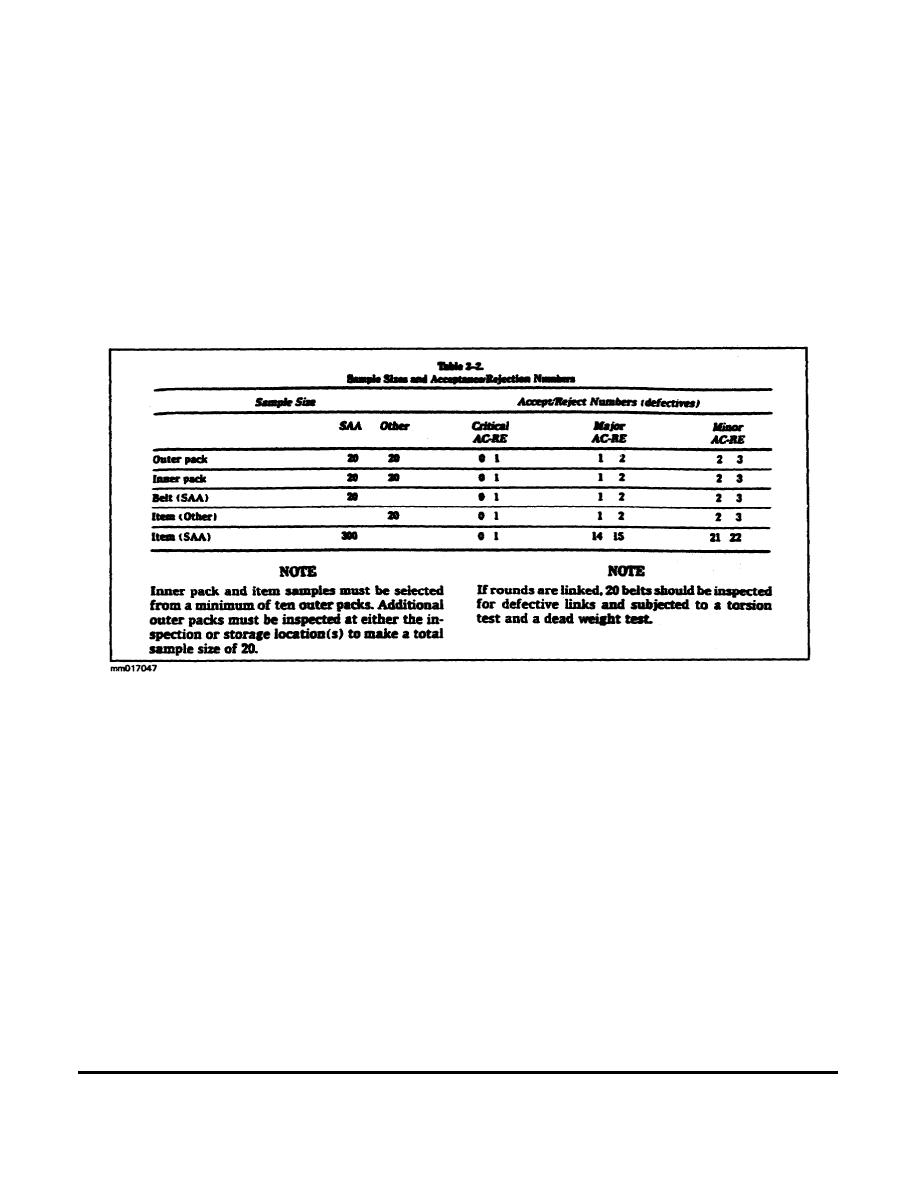
Inspection results for each lot or serial number (SN) inspected must be considered in conjunction with the results
of previous inspections for that lot or SN. Trends in the serviceability of the lot or SN must be analyzed to
determine if further action is required. This analysis could indicate that the inspection interval for the lot or SN
needs to be expanded or reduced, that corrective action in storage conditions is required, or that additional lots of
the item require inspection prior to their next scheduled inspection date.
Sample Size
The sample size (how many items are to be pulled from a lot of ammunition for inspection) is governed by
sampling plans provided in SB 742-1 or by a sampling plan provided in the SB for the particular item of
ammunition. The sample size depends on the type of ammunition, the type of storage, and the type of inspection
being conducted. An example of a sampling plan is shown in Figure 2-2.
Figure 2-2. Example of an inspection sampling plan (extracted from SB 742-1).
Sample Disposition
Hermetically-sealed containers are resealed with tape. The taped end of the container is then dipped in a sealing
compound. The exterior of the package of samples is identified as surveillance samples, not to be shipped unless
the total lot quantity is being shipped. The same sample will be reused for subsequent inspections.
Samples of small-arms ammunition packaged in metal-lined boxes are used on a recurring basis. The lids are
temporarily replaced using tape and sealing compound. Boxes are identified as surveillance samples, not to be
shipped. If the entire lot is scheduled for shipment, these lids are resoldered.
Samples packaged in barrier material are resealed according to the instructions furnished with the material. New
bags must be prepared if the original bag cannot be resealed and equivalent barrier material is available. Samples
that have been properly resealed should not be used on a recurring basis.
MM0170
2-8



 Previous Page
Previous Page
